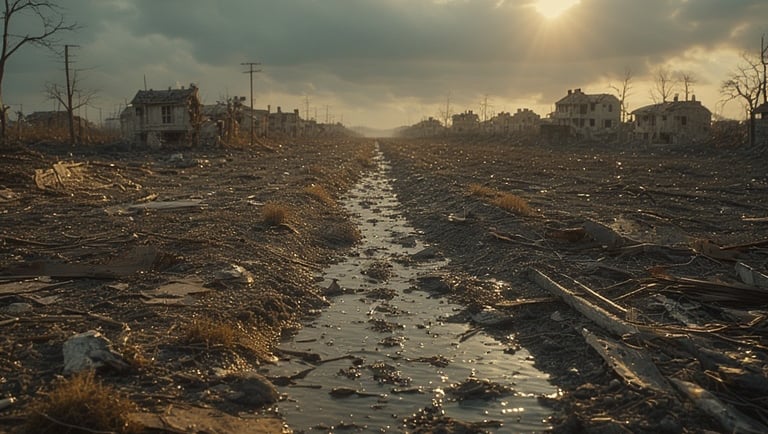The Truth Behind Climate Change
SCIENCE


For most of its history, Earth has lived in balance. The Sun warmed it, the oceans cooled it, and life adapted to the gentle rhythm of seasons. But in the last century and a half, something changed. Humans discovered fossil fuels coal, oil, gas and used them to build cities, power machines, light homes, and expand civilization at an incredible speed. In doing so, we filled the atmosphere with gases that trap heat. These gases were once in balance, but now we produce them faster than the planet can handle.
At first, the warming was small, almost invisible. Then the oceans began absorbing the extra heat and slowly changed. Warm water expanded, and storms grew more powerful. Coral reefs, which had survived for thousands of years, began to bleach and die because the seas were turning too warm and too acidic. The Arctic, once a frozen world of white, started melting rapidly. The ice that used to reflect sunlight away from Earth now exposed dark ocean water, which absorbed heat and accelerated the melting. Antarctica cracked in places scientists once thought were stable. Glaciers that nourished rivers shrank, threatening the freshwater supply for billions of people.
As the planet warmed, the air changed too. Warmer air holds more moisture, so rains came harder, faster, and in the wrong seasons. Floods swallowed cities that had never seen such water. At the same time, other places dried out, turning fertile land into dust. Heatwaves shattered records year after year, becoming hotter and longer, pushing human bodies and crops to their limits. Forests burned with an intensity never seen before, releasing even more carbon into the atmosphere and creating a dangerous cycle where nature’s ability to heal itself became weaker.
Animals and plants, which evolved slowly over millions of years, had no time to adjust. Birds migrated at the wrong times. Flowers bloomed too early or too late. Entire species vanished silently. Ecosystems that once worked like perfectly designed clocks began to fall apart, and with them, the services they quietly provided clean water, healthy soil, fresh air, predictable seasons.
Meanwhile, the ocean rose higher and higher. Cities built on coasts started planning for walls and barriers, while smaller island nations began facing the unthinkable reality: their entire homeland might disappear underwater. Millions of people were forced to migrate because their farms dried up, their fish vanished, or their homes flooded. Climate change wasn’t just a scientific issue anymore it became a human story, shaping economies, politics, and daily life.
What makes all of this frightening is how interconnected it is. When ice melts, the planet absorbs more heat. When forests burn, the atmosphere grows thicker. When oceans warm, they release gases that heat the planet even more. These loops make the problem speed up. The Earth is not just warming; it is accelerating towards a different climate, one humans have never lived in before.
But the story isn’t only about destruction. We have the technology and knowledge to slow the damage. Renewable energy is growing faster than ever. Countries are beginning to protect forests, change farming, and adopt cleaner transportation. The question is not whether we can fix the problem it’s whether we will act fast enough. The window is small, but it still exists.
Climate change is not some distant prediction. It is the planet we walk on, breathe in, and depend on shifting beneath our feet. The signs are everywhere: hotter summers, unpredictable rains, dying oceans, rising seas, disappearing species, and extreme weather becoming normal. Earth is speaking loudly now. The question is whether humanity will listen while there is still time to change our future.